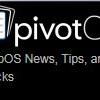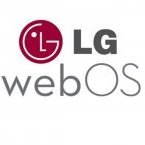Best Buy: Touchstone Charging Dock HP Touchpad $39.99
-
Similar Topics
-
By DeeDeee
Wondering if anyone has any knowledge of, or opinions about, the best soundbar to go with a 55" C4, fir clear dialogue?
-
By News Reporter
With Advanced AI Features and Capabilities, 2025 LG gram Laptops Deliver
Smarter, More Personalized Productivity Experiences
SEOUL, Dec. 31, 2024 — LG Electronics (LG) is set to unveil its 2025 LG gram lineup, the company’s first on-device AI-powered laptops, at CES 2025 in January. The new lineup includes innovative models such as the gram Pro, gram Pro 2-in-1, gram and gram Book. Leveraging LG’s gram AI technology,1 the latest grams deliver state-of-the-art capabilities and stellar performance, harnessing large language models and personalized AI features to elevate the user experience – all while preserving the series’ iconic slim and lightweight design.
Enhancing Productivity and Personalization with LG gram AI
The 2025 gram laptops present a smarter, more secure and highly-personalized user experience through LG’s innovative gram AI. With gram chat On-Device, these laptops utilize AI algorithms to process and analyze data locally without requiring a network connection. At the same time, they provide convenient access to cloud-based AI services via gram chat Cloud, powered by GPT-4o. This subscription-based service, which uses GPT-4o, is offered free of charge for the first year. The integration of on-device and cloud-based AI creates a hybrid AI solution that enhances productivity by delivering personalized insights, a comprehensive knowledge base and an intuitive, ever-evolving experience that adapts to users’ needs.
gram chat On-Device employs a small language model derived from LG AI Research’s EXAONE large language model. This enables fast and secure local processing to provide relevant answers and simplify device management. Notable features include Time Travel, allowing users to quickly and easily revisit web pages, documents, videos and audio files. Meanwhile, gram chat Cloud leverages vast web-based datasets for detailed and comprehensive responses to user inquiries. Additionally, gram chat Cloud integrates with personal calendar and email services, enabling users to manage their schedule and send and receive emails more efficiently.
Unleashing Unprecedented Performance with Intel’s Next-Generation Processors
The 2025 gram laptops set a new benchmark in the series’ history, powered by Intel’s next-generation processors: the Intel Core Ultra H-Series (Arrow Lake) and the Intel Core Ultra V-Series (Lunar Lake). The H Series processors are designed to maximize traditional PC performance, while the V Series CPUs are optimized for AI-driven PC experiences.
The Arrow Lake-powered gram laptops boast more computing power and improvement in graphics processing, compared to 2024 gram models. These impressive laptops deliver an exceptional all-around performance that prioritizes core PC functionality. The Lunar Lake-powered models come equipped with Microsoft’s “Copilot+” PC functionality, offering productivity- and creativity-boosting features such as real-time video subtitle translation and AI image generation.
Delivering Innovation and Versatility for Every User
At the forefront of the 2025 lineup is the LG gram Pro (model 17Z90TR), a laptop that presents the best of performance and portability. Inside the gram Pro’s sleek, slim and lightweight form factor is an Arrow Lake CPU and NVIDIA GeForce RTX 4050 graphics card. This advanced hardware combination enables the gram Pro to effortlessly handle a variety of demanding tasks, from resource-intensive graphic design and 3D-rendering work to video editing and running the latest AAA games.
The lineup also includes the new LG gram Pro (model 16Z90TS), the first Copilot+ PC in the gram series. Measuring just 0.49 inches thick and weighing 2.73 pounds, it delivers remarkable portability. Another highlight is the 16Z90TR, boasting a 16-inch display and an impressively light weight of only 2.64 pounds. As the lightest model in the 2025 gram Pro lineup, it exemplifies gram’s signature lightweight design while delivering powerful performance.
Additionally, the highly versatile LG gram Pro 2-in-1 (model 16T90TP) has been recognized with a CES 2025 Innovation Award for its outstanding design and functionality. Offering incredible flexibility, the device comes with a wirelessly chargeable stylus pen that expands and enhances the user experience.
To expand its U.S. market presence, LG is introducing the LG gram Book (model 15U50T), an entry-level model offering key features and benefits of the gram series at a more accessible price. The gram Book has a 15.6-inch Full HD (1,920 x 1,080) display, expandable storage options, a 720p HD webcam with privacy shutter, and a slim and light design for take-anywhere convenience.
All new gram laptops support gram Link 2.0, an upgraded version of the gram Link feature first introduced last year. gram Link 2.0 facilitates seamless device connectivity across operating systems,2 allowing users to easily share content and transfer files with a diverse range of PC and mobile products, including iOS and Android-based smartphones. This feature also allows users to handle incoming phone calls directly on their gram laptops, minimizing workflow interruptions.
“2025 LG gram products, featuring advanced gram AI, are powerful, portable productivity companions that can understand users’ needs, intelligently utilize relevant information, and enhance workflow,” said YS Lee, vice president and head of the IT Business Unit, LG Media Entertainment Solution Company. “LG is committed to delivering premium-quality laptops that harness the latest AI technologies to enable users to do and achieve more.”
Specifications:
LG gram Pro 2-in-1 (16T90TP) LG gram Pro (17Z90TR) LG gram Pro (16Z90TS) LG gram Book (15U50T)
Display Size 16-inch 17-inch 16-inch 15.6-inch Display WQXGA+ (2,880 x 1,800) OLED WQXGA (2,560 x 1,600) LCD WQXGA (2,560 x 1,600) LCD FHD (1,920 x 1,080) LCD WQXGA (2,560 x 1,600) LCD Brightness (Typ.) OLED: 400nit 400nit 400nit 300nit LCD: 400nit Refresh Rate OLED: 48-120Hz (VRR) 31-144Hz (VRR) 31-144Hz (VRR) 60Hz LCD: 31-144Hz (VRR) Weight 3.08 lb 1,399g
3.26 lb 1,479g
2.73 lb 1,239g
3.74 lb 1,700g
Size 357.3 x 253.8 x 12.4 ~ 12.9mm
379.4 x 265.4 x 14.4~15.8mm 357.7 x 251.6 x 12.4 ~ 12.8mm 359.8 x 237.8 x 18.9~19.4mm Battery 77Wh 90Wh 77Wh 51Wh Thermal Mega dual cooling system Fan cooling system CPU Intel® Core Ultra 7 processor / Intel® Core Ultra 5 processor Intel® Core Ultra 9 processor Intel® Core Ultra 7 processor
Intel® Core Ultra 5 processor
Intel® Core i5 processor GPU Intel® Arc graphics NVIDIA RTX4050 with GDDR6 6GB Intel® Arc graphics Intel® Xe® graphics Memory Max 32GB (LPDDR5X Max 8,400MHz, Dual Channel) Max 32GB (LPDDR5X Max 8,533MHz, Dual Channel) 8 / 16 DDR4 (Dual Channel, 3200MHz) Storage Dual SSD (M.2) 512GB / 1TB / 2TB (Gen4 NVMe) 1TB / 512GB / 256GB (NVMe) Audio HD Audio with Dolby Atmos Speakers Stereo Speaker (3.0W x2)
Smart AMP (MAX 5W x2) Stereo Speaker (3.0W x4)
Smart AMP (MAX) Stereo Speaker (3.0W x2) Smart AMP (MAX 5W x2)
Stereo Speaker 1.5W x2 I/O Port 2x USB 3.2 Gen2 2x USB 4 Gen3x2 Type C (with Power Delivery, DisplayPort, Thunderbolt 4)
HDMI 2.1 (4K@60Hz)
1x USB 3.2 GEN1x1 1x USB 2.0
2x USB3.2 GEN2x1, HDMI 2.1 (4K@60Hz)
Software LG gram Chat LG gram Link
LG Glance by Mirametrix®
LG gram Link Webcam FHD Webcam + IR Camera with Webcam & Dual Mic. (face-recognition) HD Webcam w/privacy shutter
# # #
1 Availability of AI features may vary by model.
2 The gram Link 2.0 supports devices running iOS and Android. The compatibility may vary depending on the device and operating system version.
link hidden, please login to view -
By News Reporter
Successful Issuance of USD 800 Million Global Public Bond
Recognized Amidst Market Volatility
SEOUL, Dec. 11, 2024 — LG Electronics (LG) has been honored with FinanceAsia’s prestigious Achievement Award for the “Best Bond Deal” in the North Asia region, which includes Taiwan, Japan and South Korea. This recognition comes in light of LG’s successful issuance of global bonds worth USD 800 million in April this year.
FinanceAsia commended LG for navigating heightened interest rate volatility, driven by geopolitical tensions in the Middle East, to successfully issue public bonds. The bonds, issued in U.S. dollars, attracted strong investor demand and were offered in two tranches: USD 500 million bonds with a three-year maturity and USD 300 million bonds with a five-year maturity, the latter being labeled as a Sustainability Bond.
FinanceAsia’s Achievement Awards are among the top three capital market awards in the Asia-Pacific region, recognizing excellence in Asia’s financial markets. These awards, evaluated by expert panels of investment and finance industry professionals, celebrate exceptional accomplishments in the capital markets, honoring issuers, investors and intermediaries.
The winners of the Achievement Awards are determined through a rigorous process involving nomination, voting and discussions among key stakeholders, arrangers and panels. The primary award categories include Deal Awards, House Awards and Dealmaker Poll.
The selection criteria for the awards are based on four equally weighted factors: delivering successful outcomes for all participants, achieving the funding objectives of the issuer, overcoming market challenges and risks and demonstrating innovation to expand the market.
# # #
link hidden, please login to view -
By pivotCE
I’m pretty sure it’s safe to say there are more HP TouchPads left in the world than there are their matching original barrel chargers. This means if you have a TouchPad today, you’re probably using a TouchStone, a computer, or any other random USB A charging brick to (very slowly) charge your 13 year old device. And it means you’ve seen the error message in the image above every time you’ve plugged it into anything other than the original barrel charger or a computer. Fun fact, you can trick the TouchPad into charging normally and not feeding you the message by creating your own custom micro USB or USB C cable if you’ve
link hidden, please login to view. Stuff You’ll Need
Assuming you have a micro USB (ie. non USB C modified TouchPad) you’ll need:
1. A 4-wire micro USB to USB A cable
2. and 1/4 watt resistors (1 each per cable)
3. Soldering iron and solder
4. Heat shrink or electrical tape
If you’re making a USB C cable but only want to use it with a USB A charger then you’ll need:
1. A 4 wire USB C to USB A cable
2. Items 2-4 above
If you’re making a true USB C to USB C cable that you plan to use with a USB C 3.1 charger you’ll need:
1.
2.
3. Any 2-wire cable or a 4-wire cable that you’ll cut the data wires out of (green and white typically) and that you’ll cut the ends from
4. Items 2-4 from the first section above
Prepare the Wires
Regardless of which cable you’re making, the end that goes to the TouchPad will need all 4 wires and the resistors. So grab the 4-wire cable of your choice and strip the ends, and I recommend pre-tinning them with some solder.
Build the TouchPad Side of the Cable
See the image below for how to arrange the resistors. If you’re making a USB A cable, go ahead and cut into two pieces, set aside the USB A side, and grab the micro or USB C for this part.. It doesn’t matter how far away from either end you go, it’s your choice. Strip the wires back so you have enough bare wire to work with.
1. Solder the ground (black) wire to one side of the 300k resistor.
2. Solder data- (green), data+ (white), the other side of the 300k resistor and one side of the 250k resistor together.
3. Then solder the other end of the 250k resistor to the red (power) wire.
Build the Charger Side of the Cable
If you’re making a USB A cable, then all you have left to do is reconnect power (red) and ground (black) to their corresponding colors on the TouchPad side of the cable, trim off the data lines from the USB A side, clean it all up with some heat shrink or electrical tape and you’re done!
If you’re making a USB C to USB C cable grab the USB C board I linked above and your 2-wire cable (or 4-wire that you’ve trimmed the data lines from). You’ll also have to cut the end off to make room for the new connector.
1. Pre-tin the board on the two outside pads marked as VCC and Gnd in the image below.
2. Solder on the red (power) wire to VCC and then black (ground) to Gnd. If you bought the housing and boards together, don’t forget to the housing on the wire before you start soldering. You also may need some super glue to keep the plastic housing from coming apart.
3. Back at the TouchPad side of the wire, take the other end of your 2-wire cable and attach red and black to their corresponding ends, clean it up with some heat shrink or electrical tape and you’re done!
Final Thoughts
You should now be able to use any charger you want to and the TouchPad will believe you’re plugged into a normal battery charger and will allow the normal charge rate flow through.
Note, you’ve effectively removed the ability to use this cable for Data since the data lines are no longer connected.
Also, for those who modded the TouchPad with USB C, the port already has 5.1k resistance but cannot communicate that to a USB C 3.1 charger with the added resistance on the data lines. This is why the TouchPad end of the USB C cable must be a “dumb” 4-wire USB C cable and the charger end needs the 5.1k resistance to tell the charger on that end to send power. This also means that you must remember which end is which, but don’t worry. Picking the wrong direction won’t hurt anything as the USB C charger won’t allow power since the wire doesn’t tell it to. I marked the TouchPad side of the USB C cable with a dab of orange paint pen.
Finally, I hope you found this helpful or at the very least entertaining! I had fun exploring the different ways of making this work and so feel free to give it a watch.
#webos4ever
The post first appeared on . Related posts:
-
-
By News Reporter
LG SIGNATURE OLED T and CineBeam Q Honored
for Their Groundbreaking Innovation and Unprecedented Design
ENGLEWOOD CLIFFS, N.J., Nov. 1, 2024 — This week, TIME revealed its annual list of the Best Inventions, naming the
link hidden, please login to view to the list which features 200 groundbreaking innovations changing the world. Debuted at CES 2024, the LG SIGNATURE OLED T is the world’s first consumer transparent TV with transparent 4K OLED screen and LG’s wireless video and audio transmission technology, transforming users’ viewing experience with unprecedented freedom. Additionally, the received a special mention for its sleek design, light form factor and performance. TIME’s Best Inventions of 2024 list is compiled by nominations from TIME’s editors and correspondents around the world, and through an online application process, evaluating a variety of industries and sectors such as consumer electronics, education, sustainability and robotics. Each submission is evaluated on several key factors, including impact, reach, creativity and effectiveness. See the full list here:
Of this year’s list, TIME’s editors write: “The result is a list of 200 groundbreaking inventions (and 50 special mention inventions)—including the world’s largest computer chip, a humanoid robot joining the workforce, and a bioluminescent houseplant—that are changing how we live, work, play, and think about what’s possible.”
Revolutionizing the world of home entertainment, the LG SIGNATURE OLED T transforms how we experience screens in our homes. This groundbreaking innovation not only delivers stunning visuals but also features a breathtaking transparent display that seamlessly blends into your environment when not in use. With its ultra-slim design, the LG SIGNATURE OLED T transforms into an elegant piece of art, enhancing any room’s aesthetic. Advanced wireless technology enables the transmission of 4K video and audio without the clutter of cables, offering a truly immersive viewing experience. The TV boasts exceptional picture quality, showcasing vibrant colors and deep contrasts, setting a new standard in home entertainment. With the LG SIGNATURE OLED T, LG is pioneering a future where technology and design coexist beautifully.
With its compact design and powerful performance, the CineBeam Q delivers stunning 4K resolution and vibrant colors, transforming any space into a captivating theater. This state-of-the-art projector features advanced laser technology, ensuring exceptional brightness and clarity, even in well-lit environments. The LG CineBeam Q also offers versatile connectivity options, allowing seamless streaming from various devices, making it perfect for movie nights or gaming sessions. With its user-friendly interface and compact form, the LG CineBeam Q is designed to enhance your entertainment experience, setting a new standard for home projection.
Furthermore, Signature Kitchen Suite’s 30-inch Combi Wall Oven, a product in the latest Transitional Series delivering a chic, minimalist appearance, has also been recognized as one of the Best Inventions of 2024 in the Household category.
To learn more about the LG SIGNATURE OLED T and CineBeam Q, visit .
# # #
-
-
Similar Tagged Content
-
- 4 replies
- 9,866 views
-
- 0 replies
- 8,382 views
-
- 0 replies
- 6,915 views
-
- 1 reply
- 6,380 views
-






Recommended Posts
Join the conversation
You can post now and register later. If you have an account, sign in now to post with your account.
Note: Your post will require moderator approval before it will be visible.